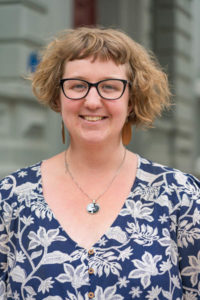Castlemaine has long been a haven for creative types with a sustainability bent. If you’ve ever driven through the region in the late afternoon autumn light and noticed the stunning colours of the landscape, its soft hills and small villages packed with generous old homes and commercial buildings you’ll understand why.
Situated on Dja Dja Wurrung Country 120 kilometres northwest of Melbourne, this regional centre is also replete with an abundance of gold mining heritage that speaks to its popularity and wealth in times gone by.
Long known to the early counter culture adopters, over the past 10 years the town has attracted even more tree-changing Melbournians. Mount Alexander Shire Councillor Rosie Annear says this has only added fuel to an already robust local appetite for climate action and sustainability.
The business community is also green
There’s a thriving green business community. Everybody The Green List spoke to mentioned The Mill, an old factory that was bought by a local

Mount Alexander Shire Councillor Rosie Annear
developer who turned it into an art and food precinct showcasing local wares.
Castlemaine is also home to eco-conscious businesses such as Like Butter, a furniture and fabrication business that runs its operations off 100 per cent clean energy. It also looks to keep waste to a minimum via a clever design that avoids off-cuts and reusing otherwise wasted materials, as well as composting all sawdust product onsite.
There’s also the 100% Clean Energy Campaign that invites businesses to jump on board the clean energy revolution and go 100 per cent renewable.
Some of the most sustainable housing around
According to real estate agent Genevieve Cantwell of Cantwell Property Castlemaine, the local property market is booming, as it is in all the regions. She says the market has always been strong, given its proximity to Melbourne, and has now gone up by 15-20 per cent, with a very tight rental market to boot.
Compared to what you get in the capitals, it’s easy to appreciate the value. An attractive weatherboard house with four bedrooms on more than 1000 square metres of land will set you back $1.065 million but you might also be perfectly happy with a more modest place with three bedrooms on 672 sq m for somewhere between $730,000 and $800,000.
The attraction, Cantwell says, is that a lot of people realise they can relocate to the region from Melbourne now that they’re confident they can work from home for at least a portion of the working week.
Many are bringing their green appetites with them. And they’re finding a ready made green network in real estate, with some significant and innovative sustainable residential developments.
There are Eco Sustainable Homes that feature rammed earth walls. And there are the Bull Street project and The Paddock, a 27-lot environmentally aware housing development being built in three stages on a 1.4-hectare site at Reckleben Street, both of which have lined up for the Living Building Challenge standard, notoriously one of the toughest to achieve.
The Paddock is the work of Neil Barrett and his wife Heather Barrett. Speaking to The Green List, Neil says that the project has been delayed by Covid but that there’s already been a lot of interest in the sustainable homes that can have a NatHERS ratings as high as 8.6 and come in at a high $700,000 for a three bedroom home that’s ready to move into.
Neil says people are equally interested in the sustainability features and the sense of community, which has become a top-of-mind for people living in apartments during the pandemic where they may not know their neighbours.
The development caters to those preferences with generous communal facilities, including a large garden studio/shed and electric bike and EV sharing.









